#Please research and think about how to deal with tour color profiles + if you want to work with P3 in the future
Explore tagged Tumblr posts
Text
Hey guys, I think the “color profile issue” we’re talking about here on Procreate is a bit different to what “rendering intent” is, and is more just that other devices or websites may or may NOT be able handle Display P3 because it’s a wider and especially more modern color gamut (range of colors able to be displayed digitally). Devices/websites that can’t or don’t handle P3 will tend to look like they’re desaturating them, but as long as they have the information in the file itself as being set to Display P3, any device and website that can handle them, will display them correctly
For example, Twitter can handle Display P3, but Tumblr cannot/does not support P3 images. Also fun fact in film editing, the idea is to either edit your films in either the most common color profile so that you have the same perspective as your common audience (usually major films will do this), or use the BEST color setting (which is P3 nowadays!) <- The same logic can be applied to digital art for your intended purposes or usage of the artwork itself
Fixing your rendering intent to fit YOUR needs is important! But also knowing your device’s color profile PLUS if your canvas matches your device’s color profile will be helpful for you in the long run to making informed artistic decisions (you can always use a lesser gamut than your monitor if your monitor’s color profile is already wide, for your canvas).
If you upload something to Procreate and it’s not as saturated, it might be that the original reference was a different color profile from your current canvas, and it’s the same if the reference is over saturated (P3 likes to bump up colors from sRGB converting into P3, and how websites deal with not being able to handle P3, is by converting them to whatever the website’s default RGB color profile is, desaturating them). Also, if you upload a reference to the reference box, YES it does desaturate it a little, so if you want more accurate colors I actually recommend NOT using the reference box, and instead importing your reference to the canvas itself! Hope this helps!
TL;DR = Display P3 is not the issue, it can be a lot of factors because different people use different color profiles across the internet, as well as different devices/websites being able to handle more advanced/modern color gamut!
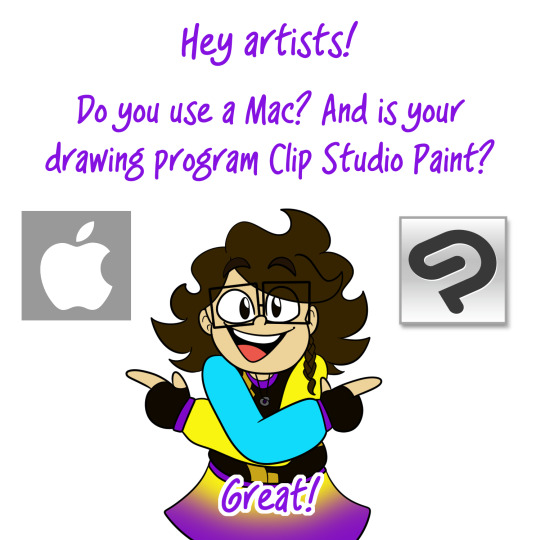

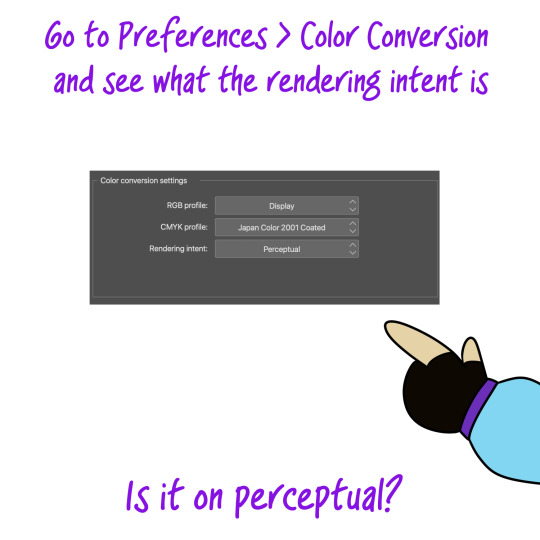


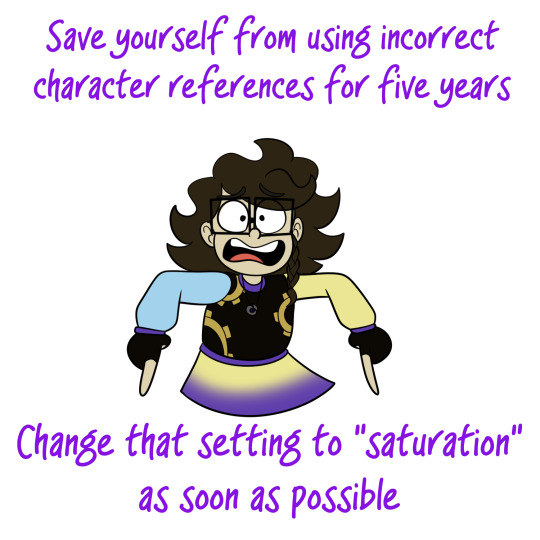
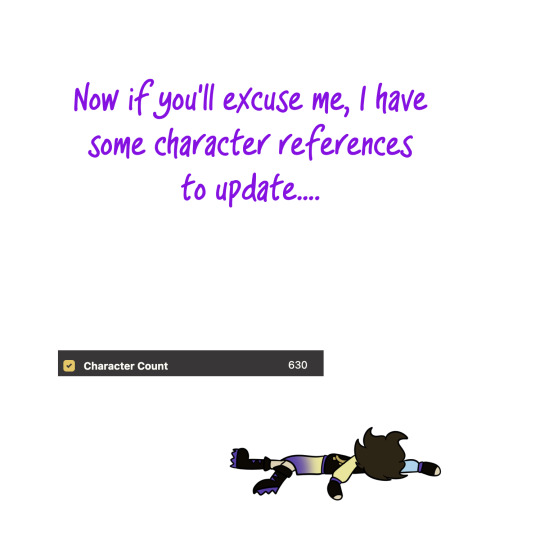
Just to make a point, every time I finished a panel of this I would export it as a PNG on the perceptual setting and use it as a color reference for the next panel
IT'S BAD
PLEASE CHECK YOUR COLOR SETTINGS
EDIT: If you're still having problems, it might help to switch from "Save/Save as" to "Export (as a) Single Layer". Just. Make SURE the box labeled "Expression Color" is set to RGB. I've been messing with this all day, and it looks like this combination of settings will allow exported PNGs to maintain their colors perfectly. To you. So far both Discord and Toyhouse still only display desaturated images and I cannot for the life of me figure out why
#My context: I study graphic design in multimedia arts in college#which means out of personal interest (and frustration with Tumblr’s color handling) i resear hed this a long time ago#and had similar discussions with my Film production professor in the past#My point with this post is not to counter the original post by OP! It’s to make sure no one suddenly says P3 destroys tour saturation#dont blame P3 blame the slow pace of innovation not supporting P3!!!#Almost every popular site can support P3 now. Tumblr is just this sad outlier#Please research and think about how to deal with tour color profiles + if you want to work with P3 in the future#since everyone has different reasons why they do or dont#but irs NOT because ‘P3 desaturates your colors’#mod stuff#In my color theory class our professor outright TOLD us what color profile to use for our projects as a RULE/REQUIREMENT#not as a suggestion#So that across the board we could all have the same unbiased perspective#Not to say that Display P3 is worse; but it's truly just because Display P3 is both new and old & not every monitor has been modernized yet
83K notes
·
View notes
Text
Tips for Interview Season
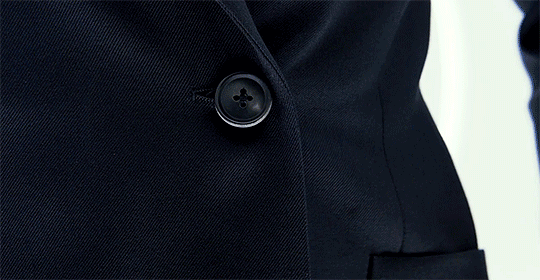
Congratulations on your invitation to interview at the residency programs of your dreams! The time period between submitting your ERAS and awaiting your first invitation to interview is nerve wrecking. You might get bombarded with a couple rejection letters in the first few days (some programs even make errors by sending their rejection letters 3-4 times…like okay okay I get it it’s not you…it’s me…haha but don’t get discouraged your perfect match is still out there). But what do you do before this time period? Here are some tips below:
1. ERAS photo – This is most likely your first business headshot ever. Or at least it was for me. Go to a photo studio like J.C. Penny (they have affordable Group On deals for $20 and under for a couple headshots) or grab a friend with a decent camera and some good lighting. Photo should show a welcoming smile (this is not a mugshot or a passport photo). Attire should be simple, no distracting patterns or jewelry. Think grays, blues, blacks, and calm pastels. For men I’ve noticed a tie is a must. For women a blouse or a button up is fine, no cleavage. Wear your hair how you will wear it during interviews because they will use the photo to reference you. Hair up or down is fine just keep it neat. I wore my hair in braids/twists and wore it loose and to the side. Background of the photo should be a neutral color, try to avoid white. 2. Interview attire – Focusing on the ladies for this one, fellas interview attire is pretty standard across the board (business suit and business shoes). Aim to get about 3 outfits to cycle between especially for those weeks you have multiple interviews. Pants suits and skirt suits or a dress and a blazer are the go-to outfits. If opting for a dress or skirt length should at least be to the knees when sitting and wear nude/black stockings. Colors you should aim for a navy blue, gray, black and I even saw a candidate in a really nice forest green pant suit. The idea is to get neutral colors and offset it with a nice pop of color that isn’t too distracting. Limit the jewelry to simple pieces (stud earring and a simple necklace is fine, avoid bangles and bracelets that make noise). Comfortable shoes are a must, I bought a 1.5inch closed toed-pumps and half way through interview season I resorted to just wearing my business everyday flats I wear on my clinical rotations from Clarks (got a lot of compliments too…I’m just like this old thang?). Just like your ERAS photo, wear your hair up or down is fine, just keep it neat. Nice companies to buy clothing from are Ann Taylor Loft, Express, Banana Republic, Macy’s, Gap etc. You can bring a leather portfolio or a simple black leather tote (small to medium) to store a note pad, pen and a bottle of water and any other essentials like your wallet. For outerwear, a nice pea coat or trench coat pairs well with business attire. Don’t over think it, most of the program directors I encountered have said they don’t really care about your attire so don’t break the bank on your medical school income (non-existent) but just put yourself together nicely.
3. Work on your elevator pitch. School? Hometown? What is your passion within medicine? Why do you want the field you’re applying to? What are you looking for in a residency program (all the curriculums look generally the same due to AAMC requirements but what additional factors are important to you – is it location? Close to home? On-call hours? Specific elective opportunities? Why would they want you? Having a concise statement to answer all of these questions in a minute or less in a way that doesn’t sound scripted will prepare you for interviews as well as networking opportunities outside of your interviews. 4. Homework to do before your interview: Know the resident profiles of the residency – read about their values, experiences and interests to see how you’d fit in. Re-read your personal statement if it might have been a while since you read it. Re-read your CV you submitted on ERAS to make sure you remember every activity or research you inclluded in case it is a conversation piece. Do some research on the faculty and the program director that will be interviewing you (think of it as the equivalence to some light facebook stalking…you wouldn’t reiterate all their accolades but it’s nice to know to causally drop in a conversation when you have nothing to talk about so you can get them talking about theirselves) 5. What do they ask you on interviews? Anything …really. The most common questions I was asked in every interview were: Tell me about yourself. Why do you want to be a ____doctor? Why our program? What are your strengths and weaknesses? What are your career plans for after residency? Beyond these questions it was really casual conversation. The number one question you are guaranteed to be asked a million times are: Do YoU hAvE aNy QuEsTiOnS fOr Me? …you might want to say no but please don’t. Before your interview you should review the program’s website and make note of things you’d like to ask questions about. If you think you know there is everything to know about this program you can restate facts about the program you love and ask them to elaborate further or just simply try your best to form a question…it shows interest (they say it’s okay if you don’t have any but please try to have 1 or 2). You are interviewing them just as much as they are interviewing you. 6. How will your interview day be structured? Most programs send you an itinerary the week or a few days before the interview telling you how long each portion is and with whom. If they don’t, you can request it politely but you still might not get it until the day of the interview (which sucks because you can’t do your research on your interviewers but it’s okay). On average interviews can range from 15minutes-30 minutes per interview and you can get anywhere from 3-5 or more of those per day. Interview day is long but you will get used to it. At some point there will be a tour of the hospital given by a resident (this is where comfy shoes come in handy). After a while you’ll be over seeing another hospital because let’s be honest every ICU looks the same for the most part but your job is to stay tuned in and again…ask questions because the hospital tour is an interview just like everything else during the day. Be friendly and get to know the other candidates, you might make friendships that last beyond interview day and who knows you might end up at the same program. The programs are also taking note of how you interact with people and whether or not you’re a good fit for their program. 7. So its October/November and I still haven’t heard from the program of my dreams rejecting me or inviting me to an interview. Or maybe I haven’t heard from any programs at all? Here’s where a polite letter of intent comes in handy. Some programs use filters to help them sift through the thousands of applications they get. You might have been lost by the filter. Send a letter of intent and make it as personalized as possible to the programs you haven’t heard from stating why you think you’d be a great fit for their program and what you love about their program and if they would review your application for an interview. Late November, I haven’t heard back from one of the programs I desired and I sent them an email and was offered an interview a few days later. So I can say it definitely is worth doing. 8. Expenses. Interview season is expensive. You may need to take out extra in your student loans than you do usually. Things that will cost you extra money are the ERAS application fee which increases the more programs you apply to, gas for your car for interviews you drive to, Uber/Lyft or other rideshare, air fare for interviews you may have to fly to, hotels for overnight stays that aren’t covered by the residency program (I lucked out because Family Medicine programs on average love to wine and dine us and reserved nice hotels for me to stay in free of charge ). My entire interview season costed me about $6,000. The AAMC estimates that for students the range is anywhere from $3,000-$7,000. It varies depending on how many interviews are local or how many programs you applied to. Sooo much money I know…but if it makes you feel better you get free lunch on interview day and even a three course dinner if you opt to go to the “optional” pre-interview social the night before (Take advantage). You might also be visiting a new town or city, if you can explore the area a bit before going home it’s a nice mini trip and way to see if you could imagine yourself living there for the next 3+ years. 9. Pre-interview dinner – is it optional? It is but if you can go, I’d say go. It’s a nice chance to get to know some of the residents outside of work without the faculty around. You also get to eat like a king on someone else’s dime. They won’t scrutinize you for not going but it does look nice if you went. If you do go, don’t just sit there and eat, please be social because although the residents say its casual…your impressions do matter. 10. Cancelling interviews. If you have been blessed with a decent amount of interviews and you can confidently say you are at a comfortable amount with all the programs you desire going to scheduled then by all means cancel. Cancel as early as you can so it leaves room for other applicants who may have wanted to interview there to accept the offer. Generally, 1 week to a month in advance is preferred. Be polite when doing so because it does reflect on your school. 10 interviews scheduled is the average comfort zone (so they say). I was paranoid and went on way more interviews beyond that because I wanted to be sure of my choice in the end. I’m happy I did that because if I were to cancel interviews without going to see the program in person I’m sure I’d miss out. On that same note, don’t be afraid to reject interview offers from places you know you absolutely would not want to end up (this may happen if you applied broadly just to have some options) – only do this if you have a decent amount of interviews scheduled. 11. What do I do after interview day? Most programs will say do not reach out with a thank you note. If they don’t say this you are free to send a thank you note if you wish. I did not send any thank you notes and I don’t believe it negatively affected me. Interview season is very busy for the program coordinators scheduling interviews…they don’t need to read my generic thank you note/email that I will be sending to every program. However, if I did have a question that wasn’t answered on interview day I would go ahead and reach out. 12. How do I make my Rank Order List? Only rank programs you interviewed at because only those programs have a chance at ranking you. Only rank programs you would like to end up at. Rank them in the order of YOUR preference not how you think they might like you. Go with your gut. I advise you send a letter of intent as you make your Rank List to the program directors of perhaps your top 5 programs. I sent a letter to my number one program telling them I will be ranking them number 1. To programs #2-5 I told them I was ranking them highly. You might not get any response (that’s okay), Match rules say programs can’t tell you they’re ranking you and they can’t ask you if you’re ranking them but there aren’t any rules against you volunteering the information. Be careful of wording, I would NOT tell my number 2 program that I am ranking them number 2 (no one wants to hear that). Make sure to tell them what you love about their program as well and why you’d be a great fit. 13. How will I know if I will match? You don’t. You may have feelings. Programs might tell you they think you’d be a great fit. You might get a post card or a letter from programs or a phone call follow up. They might hint and nudge and wink at you. With all this being said…you still don’t know for sure what the outcome of Match Day will be. All you can do is hope, pray and have faith that the feelings you got from those interactions are genuine.
3 notes
·
View notes
Text
Countdown Profile Week 5: Joseph Webb (’20)
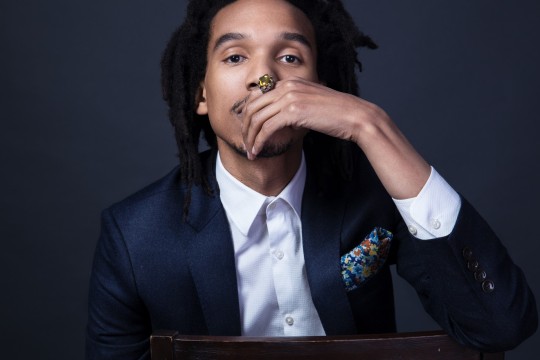
Photo: Daniel Nathan
So, Joseph, what are you up to these days?
This past May, I presented excerpts of a project that I've been working on with my partner, Barédu Ahmed, called Messages from Umi at Harlem Stage in New York. We just received some support to further develop the work and we're set to have a share in June of 2020 at Harlem Stage again.
What is the project?
Messages from Umi is a multi-discipline performing arts piece. It incorporates [music] by Barédu Ahmed along with different styles of dance. You have tap dance, you have house dance, you have contemporary dance. I'm the choreographer along with some improvisational movement elements that come forth from the other dancers. Also along with poetry in the art form of emceeing. In this context, Umi is mother hip hop, Umi being the Arabic word meaning mother. The musicians, and the dancers, we are...we receive messages and downloads from mother hip hop that we share with our audience, through movement, sound, text.
That sounds beautiful.
I'm excited about it. I really am. You know, I have a notebook of ideas, you know, that I know that I just write down was something hits me. And a lot of times you don't get a chance to actually work on all of these ideas. So I'm excited about it. But it's also nerve-wracking. I always put, and I'm getting better at this, I put a lot of pressure on myself, because I want to make sure that I get as close as I can to the vision that I first received. So it's a rainbow of emotions, but at the end of the day, it's is a beautiful experience.
“Download” something, “what you received.” You see yourself as a channel for something bigger.
Definitely. As human beings, I think we all have this part of ourselves that is greater than who we see ourselves to be. And I feel like that's where this information is coming from.
I want people to know what you've been up to. You've got a name as a tap dancer. You've been covered in major media outlets, including The New York Times. You've been doing it for a long time. Could you give an overview of what you've done as an artist?
Well, I've done some I've done some theatre. I've been on Broadway before [including Bring in ‘da Noise, Bring in ‘da Funk and Jelly’s Last Jam -MW]. I've done some national tours as well as some international stages, in Germany, in Canada and Spain as well theaters across the country, including the Kennedy Center and some other spots. And I've also done some TV work in the past. Commercials. A lot of people don't know, but I had a role on the soap opera Guiding Light.
Yeah?
I played the role of Steam, you know, on Guiding Light for a little while [sure enough, there’s no record of that on the internet. Joseph has also appeared on The Tonight Show with Jay Leno, The Oprah Winfrey Show, and Live with Regis and Kathy Lee. -MW]. I also was a lecturer at Medgar Evers College for eight years. I really enjoy teaching and I also enjoy performing. I feel like that's like part of a balance for me as an educator and a creative. I feel like this because as a teacher I just learn so much.
Why did you come back to complete the MA in Applied Theatre?
I really like the program and what the program stands for, and the people that come through the program. And I always wanted to finish [Joseph and I started the program together in the fall of 2009. -MW].
Would you talk about your thesis project?
I have an awesome team that I'm very grateful to be a part of. Our thesis project as a whole is dealing with museum and gallery spaces: what do museum and gallery spaces represent? What work actually gets allowed to be in museum and gallery spaces?
My particular question that I'm entertaining right now--that could possibly change--is how can applied theatre and the performing arts be used to enhance and improve the experiences of museum visitors who are black, indigenous and people of color?
As a youth, I never saw myself represented in museum or gallery spaces. I always thought of them as white and European institutions. Recently, I'd say maybe about four or five years ago, I had been invited to perform in museum spaces like the National Gallery of Art in Washington, D.C.--my dance company, Dancing Buddhas, was asked to come and perform excerpts of the piece that I've been working on called Monk, which is a celebration of the black American musician Thelonious Monk and some of the artists that he worked with, like Miles Davis and John Coltrane.
And then I was asked to come back and to present some work that was inspired by the American visual artist Stuart Davis, which was very exciting for me. I was grateful that I was able to bring in my love of dance and the performing arts into a visual art space.
So I started to see…and then also with the National Museum of African American History and Culture: when I went to go visit the museum the first time I remember saying, Yeah, this is something that is very inspiring for me—not only because I identify with a lot of the exhibits and what is being brought forth in the museum, but just the different aspects of art that take place in that space. I was able to do a lecture-demonstration [at the museum] of some of the social dances that took place during the ‘50s and the ‘60s. And so it's just interesting that, you know, these places that when I was growing up, I just wasn’t inspired to be in or didn't feel that I was being represented—[now] I've been able to come in and share.
Your research question is really alive. It's personal.
Very much so.
And also, how can how can we use movement as an interpretation and/or a discussion of what the artwork means and what the artwork represents, as opposed to it always being a written assignment? How can how can you use movement and other various performing arts to say, "this is what this piece means to me. This is what this piece is lacking. And this is my interpretation."
This is not just the shift in content, but a shift in paradigm. There's one school of museums in which they're teaching you the truth and you come in and soak it up. [In contrast], you're asking people to respond. And not just respond verbally, but respond physically and through art.
Mm hmm. Mm hmm.
That will be great. Let's take a look at where you want to go. What dreams are really alive for you as an artist and an educator?
As a creative I would like to explore more ways in which I can break that fourth wall. So more engagement between what I'm doing on stage and the audience. That's one of the things I've been inspired by in the program that I want to bring more of in my practice. I would like to also do that more in the classroom as a dance instructor. I would like to...have the students understand that, yes, there's something that I have to share [as the instructor], and that's one of the reasons why you signed up. But I want them to be more invested in…they might be a “beginner” at a particular level, but there's something that they're invested and engaged [in] also in a different way, that that isn't the “banking” dance method.
No matter no matter what, even if they don't have a ton of skill, there is something happening for them. They’re not just being asked to hold on until they get good.
Yeah. So those are some of the things that I'm thinking about. I'm also a recording artist. I'm an emcee. So I have quite a few projects. I have some projects on iTunes. I want to work across performing creative arts disciplines, you know, with different artists.
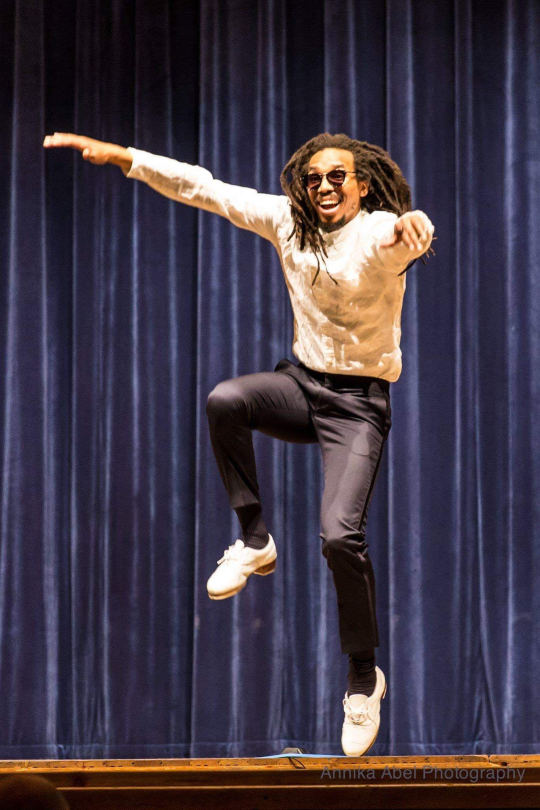
Photo: Annika Abel
It's remarkable, all the different disciplines that you weave together. You must weave through different communities, too. Like, the hip hop community, the tap dance community, the teaching community. I also weave a lot. I'm always interested in how people pull it off, because there's expectations and confusions like "oh, but I thought you were the tap guy." How do you navigate?
That's happened to me a lot in the past, and I feel like it still does happen from time to time. I think humans, we work very well when we place labels and we put things in boxes, because it helps us in a way, unconsciously, control what a person can do. One of the ways that I navigate that is to [say], “I'm an artist and I have something that I have to say. And today I'm saying it through this medium.” And that's that.
When you say that, I don't want to be thinking about “which one” you are, I want to go. Let's do it.
Yes, yes. And even till this day [laughs], even till this day I still have people that don't quite understand that I express myself in different forms, which really baffles me.
I liked your compassion but also that you’re not waiting around: “People need these categories to control the world.”
I remember when I was in Noise Funk... I joined the cast of Noise Funk in 1996, but towards the end of '95 I started writing, and when I got to New York, in ‘96 and ‘97, even though I was on Broadway, I started to started to produce my own shows that incorporated poetry—the art form of emceeing—with live music and tap dance. I think a lot of people enjoyed and appreciated what we presented. But I also had agents come through and they just said, "Oh, my goodness. We love this, but we just don't know where to put you, man." Essentially, what box to put you in.
Can you help us box yourself, please?
Yeah. "Can you help us box you please?" I just say, hey, this is what this is.
Is there anything about your growth in all these dimensions we've talked about that you haven't gotten to say yet?
We know what we need to do. That message has been very strong over the last six or seven months. You know, it's different for everyone, depending upon where they are and what they're doing. But we know what we're supposed to be doing. We have to remember that and stay in tune with that. You know, it's so easy to get to get caught up in the illusion of things and to be wrapped up in what someone else is doing or the stimuli that we get from media, social media in particular. And living in this wonderful city that we call New York City, but it also can be a distraction sometimes if you let it. We need to remember that we know what we're supposed to be doing creatively, artistically or otherwise, and we need to remember to stay in tune with that.
Thank you so much.
Yes. Thank you.
1 note
·
View note